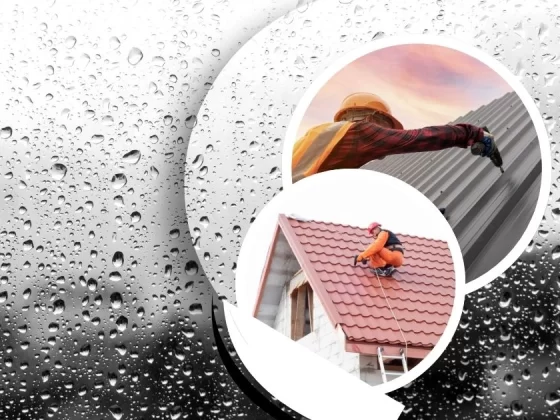Keeping a home comfortable and energy-efficient begins with understanding one of the most critical components of your house: the windows. Windows do more than let light in and provide a view of the outside world. They play a significant role in regulating your home’s temperature, reducing energy costs, and improving overall comfort. In recent years, energy-efficient windows have attracted considerable attention as homeowners seek sustainable ways to reduce heating and cooling costs while maintaining a cozy indoor environment. One of the most critical decisions in this area is choosing between double-pane and triple-pane windows. Understanding the differences, benefits, and limitations of each type can help homeowners make a smart investment.
Why Energy-Efficient Windows Matter
Windows are often one of the weakest points in a home’s thermal envelope. Poorly insulated windows allow heat to escape during winter and let unwanted heat enter during summer. This can make your heating, ventilation, and air conditioning system work harder, leading to higher energy bills. Energy-efficient windows reduce heat transfer, keeping your home warmer in winter and cooler in summer. In addition, they help reduce noise from outside, protect your furniture from harmful UV rays, and can even increase your property value.
Several key factors are typically used to measure the performance of energy-efficient windows. U-factor measures how well a window resists heat transfer. A lower U-factor indicates better insulation. Solar Heat Gain Coefficient (SHGC) measures how much solar energy passes through a window. Windows with a lower SHGC keep homes cooler in hot climates. Additionally, the visible transmittance rating indicates how much natural light the window allows into the room. By understanding these metrics, homeowners can choose the right window for their climate and lifestyle.
Powerful Benefits of Double vs Triple-Pane Windows
1. Double-Pane Windows: The Standard Choice
Double-pane windows are the most common type of energy-efficient window on the market. They consist of two layers of glass separated by a spacer and sealed to create an insulating air or gas-filled space. The space between the panes is often filled with inert gases such as argon or krypton, which improve insulation by reducing heat transfer.
One of the main advantages of double-pane windows is affordability. Compared to triple-pane options, they are generally less expensive while still offering significant energy savings. Double-pane windows can reduce heat loss by about 30 to 50 percent compared to single-pane windows. For homeowners looking to balance performance with cost, they are often the go-to choice.
Another benefit of double-pane windows is their versatility. They can be installed in nearly any home without significant modifications. They are available in a wide range of frame materials, including vinyl, wood, fiberglass, and aluminum, allowing homeowners to match their windows to their home’s style and architectural design. In addition, they are lighter than triple-pane windows, making installation easier and reducing stress on window frames.
Double-pane windows are particularly effective in moderate climates. In areas with mild winters and summers, the insulation they provide is often sufficient to maintain comfortable indoor temperatures without straining heating or cooling systems. They also offer reasonable noise reduction, making them suitable for homes near busy streets or neighborhoods with occasional loud activity.
2. Triple-Pane Windows: The Premium Insulation Option
Triple-pane windows take energy efficiency to the next level. They include three layers of glass separated by two insulating spaces, which are usually filled with argon or krypton gas. This additional layer significantly improves the window’s ability to retain heat during winter and block heat during summer.

One of the key advantages of triple-pane windows is their superior U-factor. Because of the extra layer of glass and gas fill, they typically have a lower U-factor than double-pane windows, meaning less heat escapes from the home. In colder climates, triple-pane windows can make a noticeable difference in energy savings and indoor comfort. Homes with triple-pane windows often experience fewer drafts and more consistent temperatures throughout the day.
Triple-pane windows also provide enhanced soundproofing. The additional pane of glass and the two insulating spaces create a more effective barrier against external noise. This can be particularly beneficial for homes near airports, highways, or busy urban areas. Homeowners often notice a dramatic reduction in street noise and other external sounds.
While triple-pane windows are more expensive upfront, the long-term energy savings can make them a worthwhile investment, especially in extreme climates. They can significantly reduce heating costs in northern regions with long, harsh winters. In addition, triple-pane windows tend to be more durable and less prone to condensation, which can prolong their lifespan and reduce maintenance needs.
3. Comparing Double and Triple-Pane Windows
When deciding between double and triple-pane windows, it is essential to consider climate, budget, and overall home efficiency goals. In colder climates, triple-pane windows are often the better choice because they provide superior insulation and reduce energy bills more effectively. In milder climates, double-pane windows usually offer sufficient performance at a lower cost.
Energy savings is not the only consideration. Triple-pane windows are heavier and may require stronger window frames and additional support. Homeowners should ensure their existing window frames can handle the extra weight without compromising structural integrity. Installation can also be slightly more challenging and more costly due to the glass’s increased thickness and weight.
It is important to note that not all triple-pane windows are created equal. Factors such as low-emissivity coatings, gas fill, and frame material play a significant role in overall performance. Similarly, double-pane windows with high-quality frames, argon gas fill, and energy-efficient coatings can perform nearly as well as some triple-pane models. Therefore, it is essential to review product specifications, certifications, and energy ratings before making a final decision.
4. The Role of Gas Fills and Coatings
Both double and triple-pane windows often include gas fills and low-emissivity coatings to improve insulation. Argon is the most commonly used gas because it is inexpensive and provides good thermal performance. Krypton is denser and offers better insulation, making it more suitable for triple-pane windows where maximizing energy efficiency is a priority.
Low-emissivity coatings are thin metallic layers applied to one or more glass panes. These coatings reflect infrared heat into the home during winter and block unwanted solar heat during summer. Low-e coatings can also reduce fading of furniture, carpets, and curtains caused by ultraviolet rays. Windows with multiple layers of low-e coatings and gas fills offer the highest level of energy efficiency.
5. Installation and Maintenance Considerations
Even the most energy-efficient windows cannot perform well if they are improperly installed. Air leaks around window frames can drastically reduce a window’s effectiveness. It is crucial to hire a qualified professional for installation to ensure a proper seal and alignment. In addition, windows should be checked periodically for signs of condensation, frame warping, or seal failure.
Maintenance for double and triple-pane windows is relatively simple. Regularly cleaning the glass, inspecting the seals, and keeping the frames in good condition will extend the window’s life and maintain its performance. Triple-pane windows may require slightly more care because of their additional glass layer, but the difference is minimal.
6. Cost vs. Savings: Making the Right Choice
Investing in energy-efficient windows can be a significant upfront expense, but the long-term benefits often outweigh the initial cost. Double-pane windows offer a solid balance of performance and price, making them a practical choice for most homeowners. Triple-pane windows provide the ultimate insulation and comfort, especially in extreme climates, but at a higher initial investment.
When evaluating cost, consider the potential energy savings over the lifespan of the windows. Homes in colder regions may see a return on investment in just a few years with triple-pane windows, while in milder climates, double-pane windows may be more cost-effective. Incentives such as tax credits, utility rebates, and energy efficiency programs can also help offset the cost of high-performance windows.
7. Choosing the Right Window for Your Home
Selecting the right window involves more than just choosing double or triple-pane glass. Consider your climate, your home’s orientation, the quality of your window frames, and the type of coatings or gas fills used. Windows that perform well in one climate may not provide the same benefits in another. For example, low-e coatings designed for cold climates may trap heat during winter but could increase cooling costs in hot climates. Consulting with an energy-efficiency expert or a professional installer can help you make a well-informed decision.
Hidden Features, Ready to Be Found
Energy-efficient windows are more than just a modern home upgrade. They improve comfort, reduce energy bills, protect your home from UV damage, and contribute to a more sustainable lifestyle. Choosing between double and triple-pane windows depends on your budget, climate, and long-term goals. Double-pane windows offer affordability and adequate insulation for most homes, while triple-pane windows provide maximum thermal performance, soundproofing, and long-term savings in extreme climates. By understanding the differences, features, and benefits of each option, homeowners can make an informed decision that enhances their home’s comfort, efficiency, and value.
Investing in high-quality, energy-efficient windows is an investment in your home’s future. With the right selection and proper installation, you can enjoy a more comfortable, quieter, and energy-efficient living environment for years to come.






